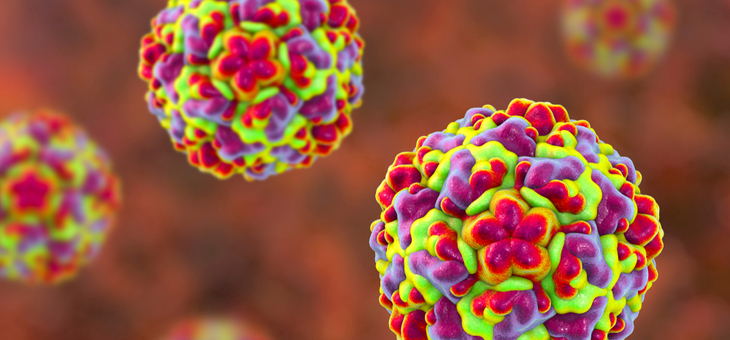The common cold virus has been under the microscope for decades as scientists investigate whether it can be manipulated to assist in the treatment of a wide range of cancers. And University of Queensland (UQ) researchers believe they have come up trumps.
Scientists have been investigating how to reprogram the virus to treat such conditions as melanoma, Australia’s fifth most common cancer, and deadly pancreatic cancer.
The virus that causes the common cold (adenovirus) can kill skin cancer cells, University of Newcastle researchers declared in 2004. They were hopeful that if their findings could be replicated in human trials, a treatment could be available within a few years.
It is the same virus being used at Oxford University in the quest for a vaccine for COVID-19.
Now, UQ researchers say they have been able to use a genetically engineered cold virus to kill basal cell carcinoma (BCC) tumours.
BCC, generally caused by sun exposure, accounts for 70 per cent of non-melanoma skin cancers in Australia. Most are not life threatening, but cutting them out can leave people disfigured and, in some cases, follow-up radiotherapy is required.
The Queensland study involves injecting a genetically modified cold virus directly into a BCC. The ABC reports that early results have yielded a surprisingly high cure rate.
Dr Greg Siller, a Brisbane dermatologist and adjunct associate professor at the University of Queensland’s faculty of medicine, told the ABC that an “infertile” cold virus had been injected into a tumour with an unexpectedly high “cure rate”.
“We were delighted,” he said. “Not only did we achieve an 84 per cent cure rate on the target tumours but, to our surprise, all of the other tumours on those patients showed evidence of immune activation.
“It appears we have stimulated the patients’ immune system to deal with some of these other BCCs, leading to reduction in size – and some were even cured.”
Dr Siller said the genetically engineered cold virus was used as it could not be replicated in a patient.
“It is effectively infertile, alive, and it affects cells but when it tries to multiply, it can’t,” he said.
“What we have done with this virus however is to not only make it sterile, we have spliced in human genes.
“[These genes] code for a cytokine (small proteins important in cell signalling) called gamma interferon, which is the protein that our body uses to fight cancers.
“By using the virus as a vector for the delivery of gamma interferon directly into the tumour cell, we are delivering a naturally occurring anti-cancer therapy directly into the middle of the cancer cell.”
Dr Siller said his patients were perplexed when he told them he wanted to give them a “big dose of the common cold”.
He said the virus could make people feel as if they had a cold, but that the symptoms generally lasted for less than a day.
Dr Siller said it was too early to refer to any treatment as a cure, but that was the goal.
“Our ultimate goal is to have the virus injection to produce – not only as a cure of BCCs but in preventing the development of any further tumours,” he said.
The Cancer Council says symptoms of BCC can include a pearly lump or a scaly, dry area that is shiny and pale or bright pink in colour.
Have you had treatment for BCC? Has it caused scarring that concerns you? Did you require radiotherapy?
If you enjoy our content, don’t keep it to yourself. Share our free eNews with your friends and encourage them to sign up.
Related articles:
https://www.yourlifechoices.com.au/health/news/specialist-referrals-out-of-date
https://www.yourlifechoices.com.au/health/news/pay-your-gp-what-you-want
https://www.yourlifechoices.com.au/health/news/common-drug-may-delay-dementia

